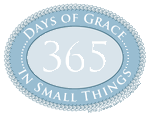Hell's bells, I don't know where the time has gone. Mo specifically asked me to write about the results of constraint therapy for Hannah, and so I will, but first I'll give my excuses for why I am so very absent. I had meant to blog from Disneyland, but I was really in a lot of pain after oral surgery to extract a tooth and begin an implant process, so every time my kids were down and I could rest I didn't feel like getting on the computer. On the night before Thanksgiving, I slipped on ice carrying Hannah, two glass bowls and the school photos, all of which needed protecting and so I torqued my body in the air to not land on Hannah and thereby tore my hamstring. When folks picked us up and dusted us off the baby wasn't even damp. I win! I really seriously injured myself though, so now when I get my kids down in the evening I need to lie down and try to elevate my hamstring/thigh above my heart to reduce swelling (not easy). So, I beg your pardon if I normally comment on your blog, or if I normally give you something to read, and I've been letting you down. I look forward to things getting better in six to eight weeks. Yeah. Good times.
Hannah did three and a half weeks of constraint casting. The half week was added because I wanted someone professional to take the cast off, because my daughter is a smart cookie and if we do this again in six months I didn't want her to remember that I could take her cast off, I wanted it to be done by a therapist. We definitely see improvement in the use of her affected hand/arm. I would absolutely recommend this therapeutic approach. Hannah was upset but less so than I expected. I was a bit wound up for a while before the cast was put on because I thought she might cry for days and we would wimp out and give in and take it off. She really was fine at the outset, but she did have difficulty sleeping, and staying asleep, largely because the cast literally weighed ten percent of her tiny body weight. Those of you with bigger kids might not have this issue. My treating therapists have a child wear the cast and simply go about their daily lives, we didn't do the six hours of special OT that make up the basis of some programs in other parts of the country, so this was probably a lot easier. Hannah's biggest challenge was with eating, she simply would not use her right hand to put food in her mouth and she seemed indignant that she would be fed like a baby, but she did let us feed her. I was flexible about letting her use her binky more than we had, since I've been trying to reduce use and encourage more speech, but she foxed me by getting her day care minions to put her binky in her mouth. After a morning therapy session I dropped her at the day care and stayed to eat lunch with her so of course I fed her. Her little friends gathered around us to monitor the mom in their midst. I kept the binky clipped to her shirt so she'd have to use her right hand to get her binky in her mouth. When she would try to do it the movement really exposed that supination is something that we really need to work on but she developed a work around. I saw her look at her two favorite boys, and say "binky" and they both leapt in and tried to be the one to get the binky first and get it in her mouth. Minions! At age two! She has since moved to the next up aged class and now is at the bottom of the pecking order, where the toddlers take her binky out of her mouth and say "binky in your pocket, Hannah!"
Results: extraordinary. the first week after removing the cast we were in Disneyland so I couldn't observe much in the way of the results because Hannah was not often in a place where she might pick up smaller items. I did buy some toys to encourage bilateral tasks - cookies in little plastic "jars" and things of that nature and we worked on those in the car. Now that we are home, I can see more of what she is doing with her affected hand. What is most noticeable is that she uses her hand much more automatically, or when necessary, she uses her hand to hold the thing she picked up first then picks up a second item with her good hand. She is much quicker to use her right hand to balance a cup or bottle, or hold a bowl of Cheetos while she feeds herself with her good hand.
Go Righty, go, get that foam number.




















